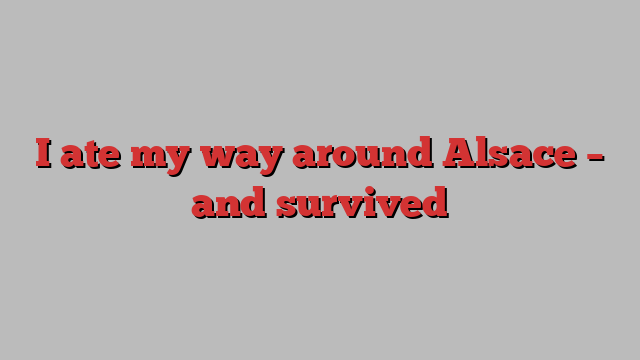
There are trips where you visit the spa, centre yourself and return home refreshed. Maybe you notice locals thriving into their golden years and vow to adopt their habit of eating olive oil and tomatoes. Then there are trips to Alsace. You don’t go to Alsace to practise restraint, vegetarianism or intermittent fasting: you go there to eat.
Alsace: home to choucroute garnie, tarte flambée, Riesling, pretzels and, don’t be afraid to say it, pork knuckles. This area of France, with its German influence, does wonderful regional cooking in the traditional winstub, a typical bistro with a homey atmosphere. It’s also home to high-level gastronomic restaurants for those who prefer Michelin-star refinement to more rustic pleasures.
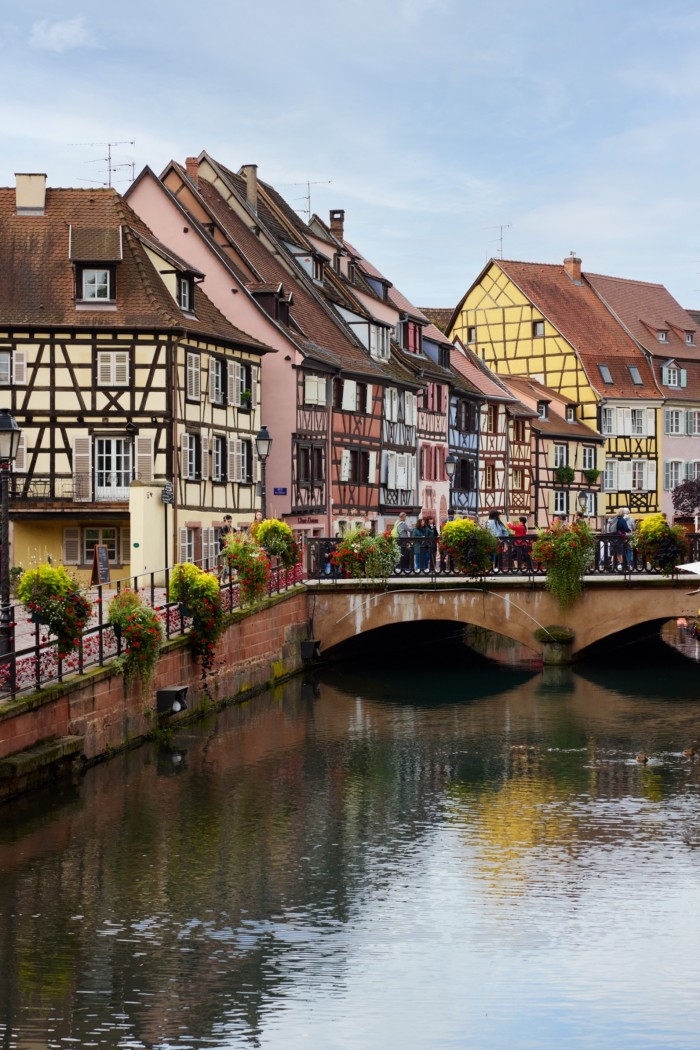
Colmar, in the region’s south, is a good place for the trencherman to start (I’m not sure there are trencherwomen, who are too smart for unhinged recreation). This small town’s cobblestoned streets wind amid timbered buildings and all seem to lead to a towering church. Walk in any direction and you’ll realise this is a food-loving area. Pretzels hang from pegs in outdoor stands. People in the cafés drink beer from nearby breweries. Immense rounds of cheese sit impressively on store shelves. Go inside; they’ll let you try some. You can find all of this in the covered food market, which occupies a brick building along the River Lauch. This appealing area, divided by canals, is referred to as Little Venice.
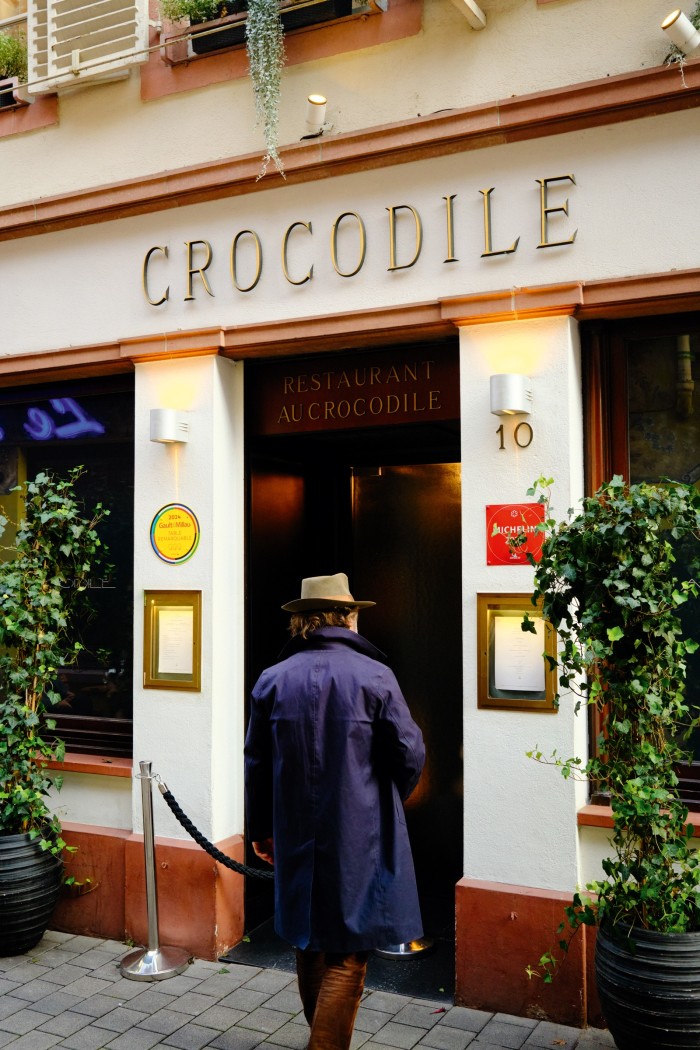
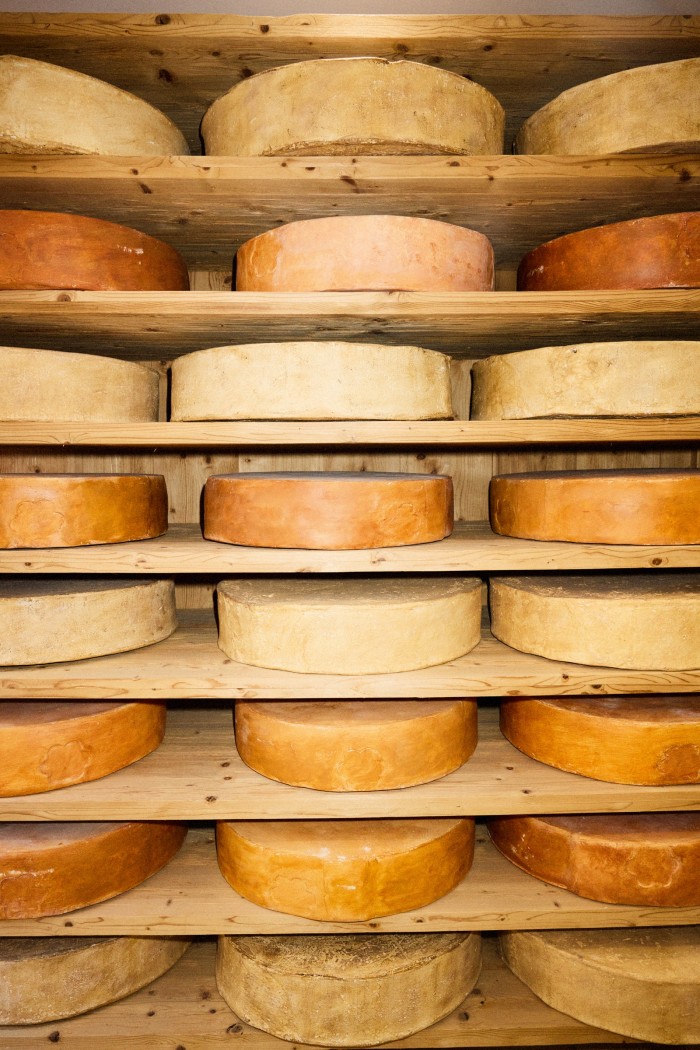
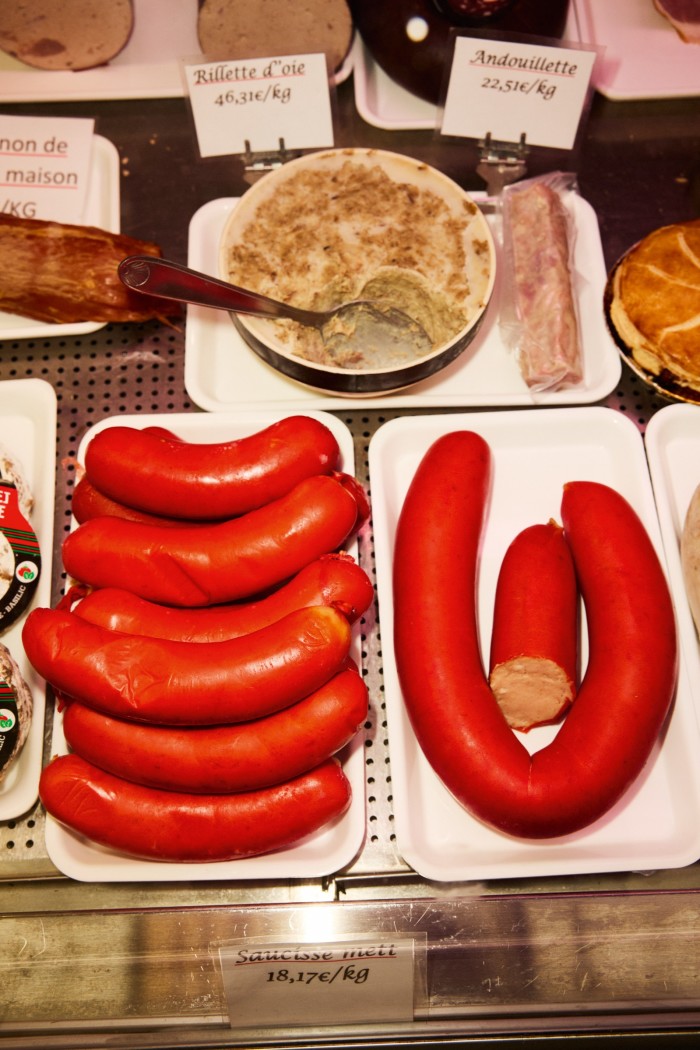
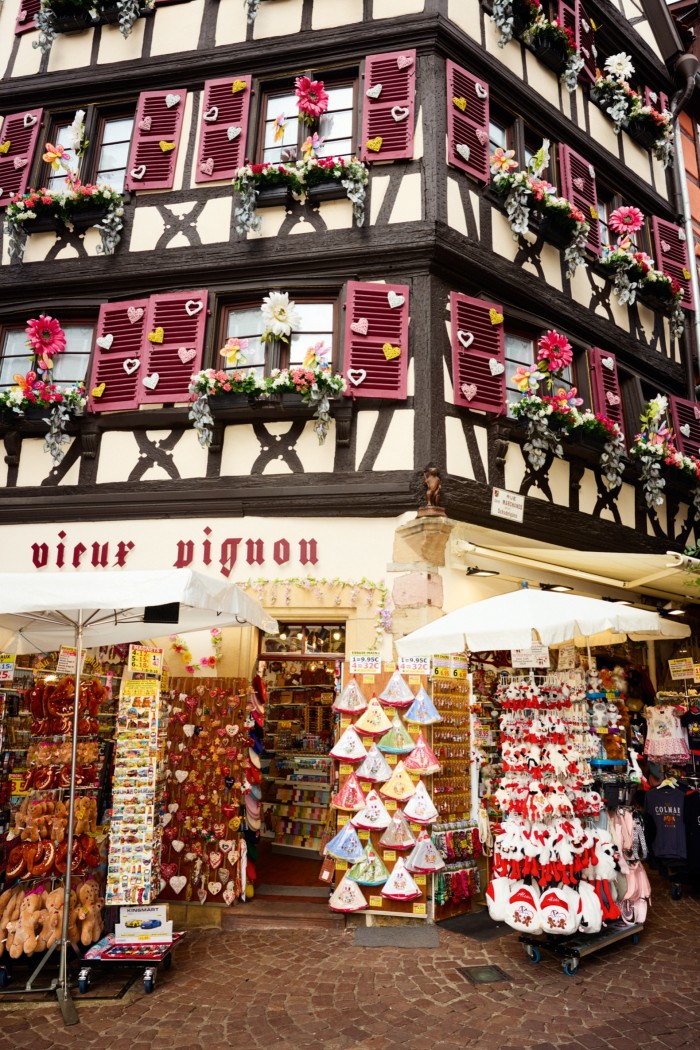
Airy and impressive, the market sets the tone for the regional gastronomic experience: there are stalls with specialists selling smoked ham, slabs of Munster cheese and sausage, sausage and more sausage. It puts you in the mood for lunch, so head to La Maison des Têtes, a Relais & Châteaux property in an ornate historic townhouse whose façade is covered in wood carvings. It has a number of handsome, minimal bedrooms set around a welcoming courtyard, but food is why people convene here. There’s an ambitious Michelin-starred restaurant and the attractive Brasserie Historique, a modern, airy take on a winstub.

The winstub is a very good invention. Literally translated as “wine room”, it’s a restaurant, usually wood-panelled, of intimate proportions, that feels like a home. I was determined to visit a number of winstubs and enjoy them aggressively. At the Brasserie, I consider ordering foie gras as a starter – this is my first meal in Alsace, after all – but thankfully the waitress urges me toward a more responsible approach. In the thrill of arrival, you need the server to protect you from yourself. I recall my sister’s long-held opinion: “There are no starters in Alsace.”
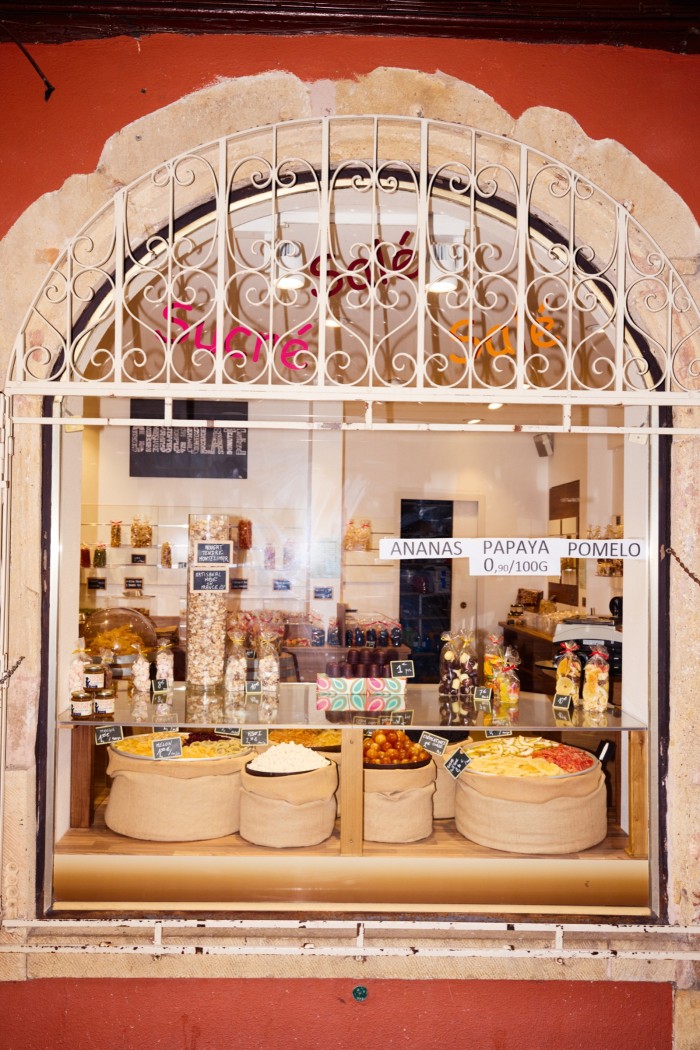
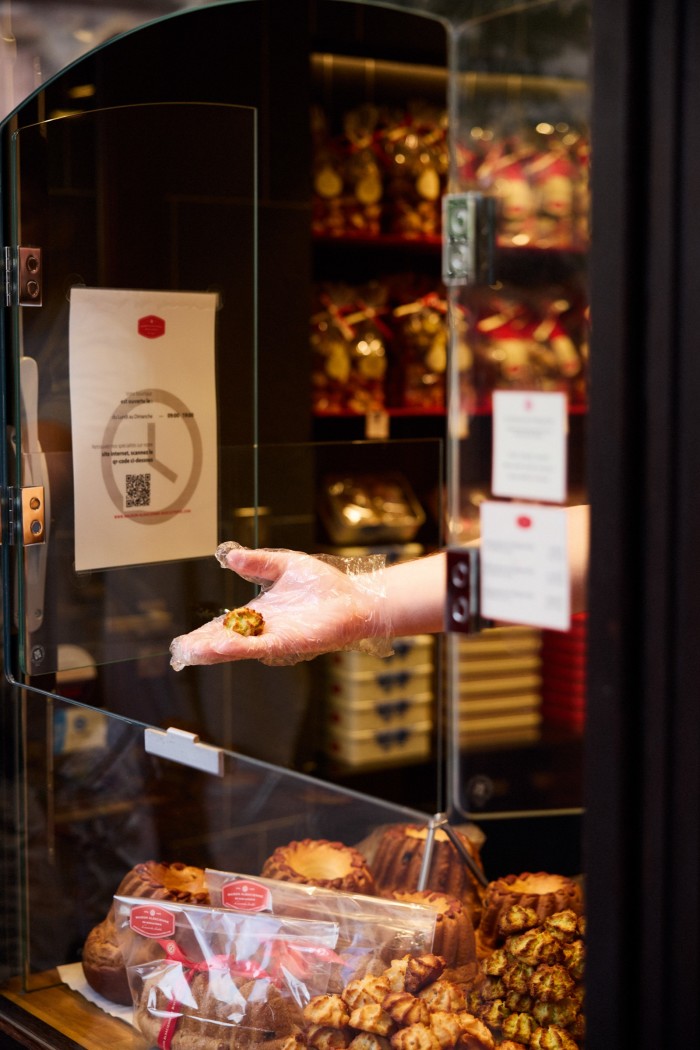
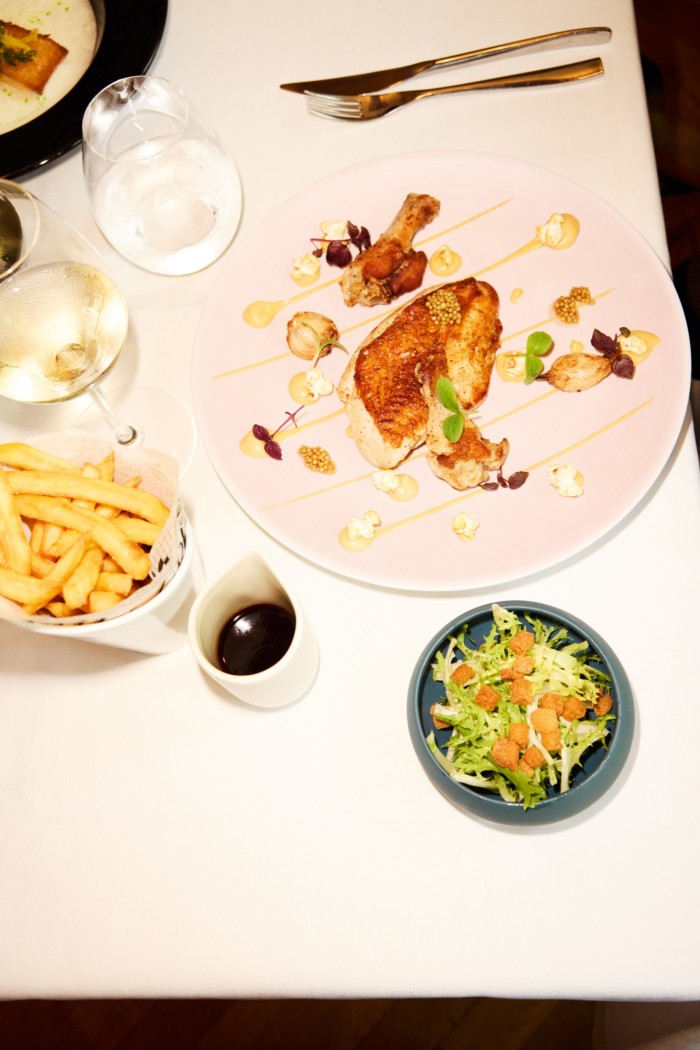
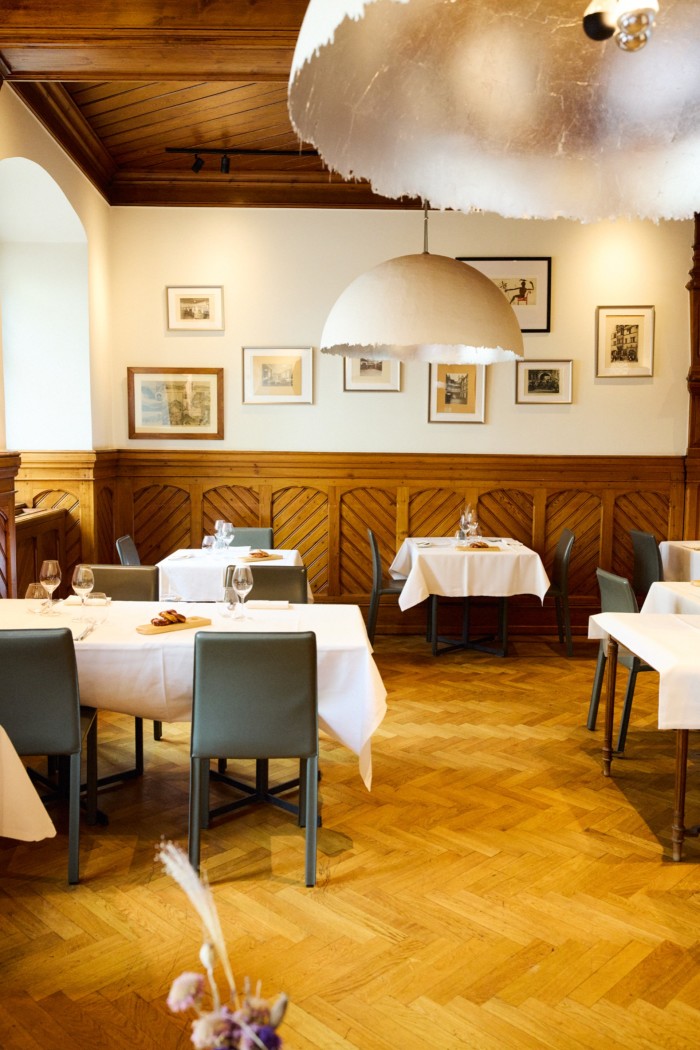
Here, the main attraction is choucroute garnie. You’ll find this at Brasserie Lipp, the famous Alsatian outpost in Paris. But choucroute garnie is a curious name – “garnished sauerkraut” – not to mention deceptive, because the garnish is not a sprig of parsley or a bouquet of herbs: it’s an alarming number of sausages and slabs of meat. Each menu dutifully tells you the number of pieces of meat to expect, often five, which already seems excessive – but at the Brasserie Historique there are a mighty eight. These include a smoked sausage, a small boiled weisswurst, a strip of bacon, its smoked companion and a braised pork knuckle, which could be a meal in itself.
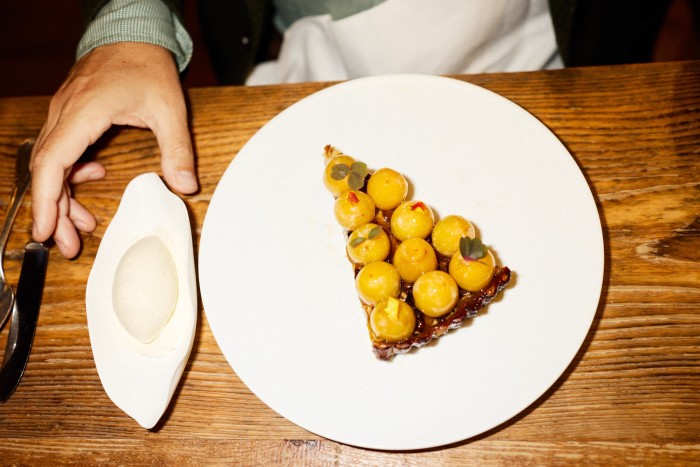

The counterpoint to all this decadence is the choucroute, which here is deeply coloured – they use cumin, which gives the dish a gentle earthiness. Order a beer (Meteor, the oldest still-active brewery in France, has been making beer in the area since 1640) or a glass of dry Riesling and you’re ready to walk off lunch before taking a well-earned nap.
North-west of Colmar is Kaysersberg: it sits at the base of the Vosges mountains, which range a lovely green and red in the autumn. The Weiss river runs low and clear through the far end of town. Along the main street is one food specialist after another. Vineyards grow up the hills in every direction – not just Riesling, but also Pinot Gris, Sylvaner, even Pinot Noir.
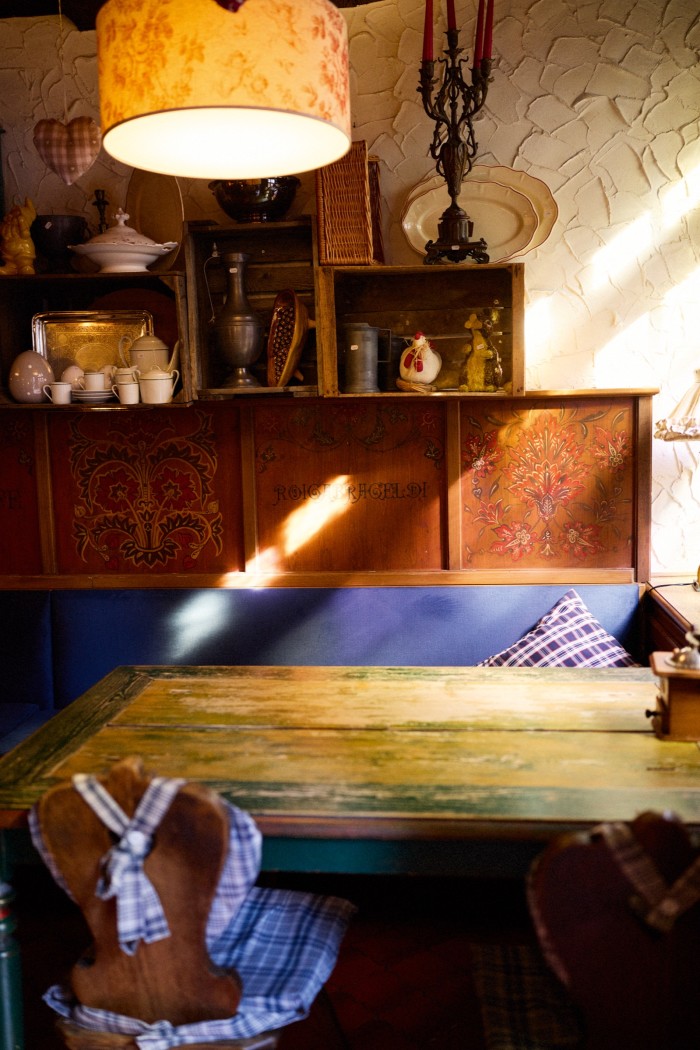
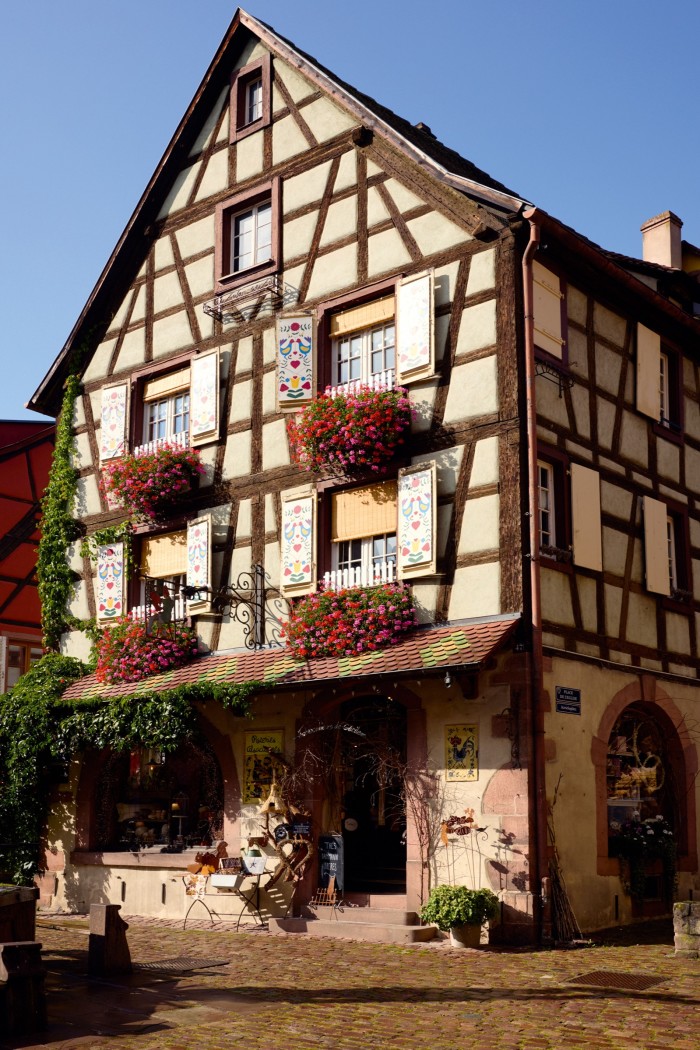
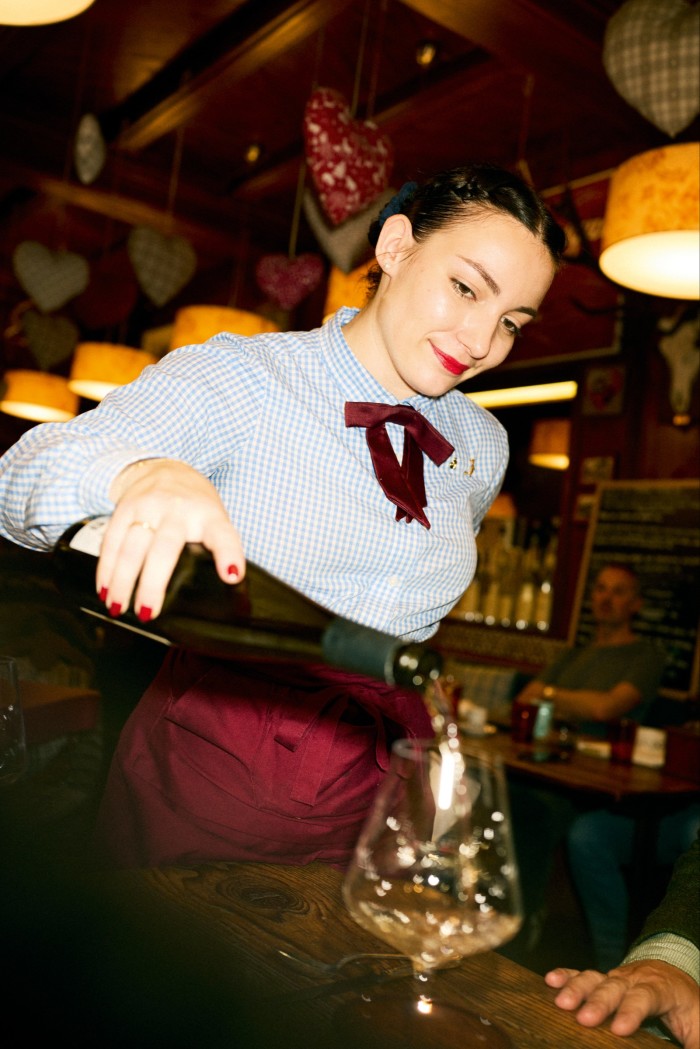
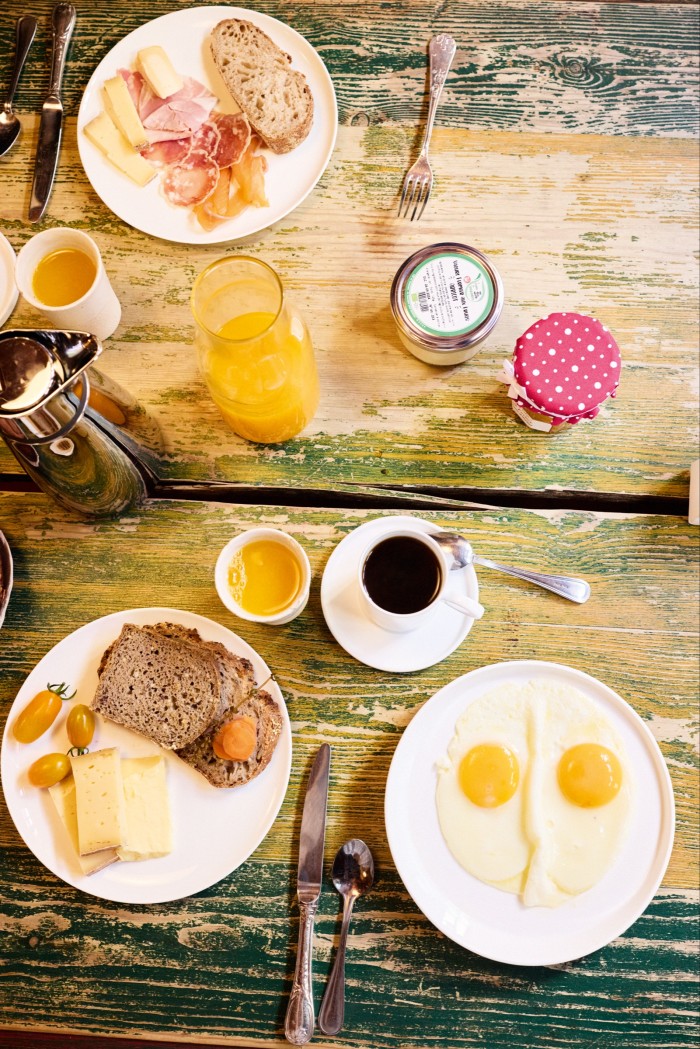
The centre of the action is Le Chambard, another Relais & Châteaux property, an updated country inn whose chef and proprietor, Olivier Nasti, oversees a two-star Michelin restaurant, a tremendous bakery and an excellent winstub. When you enter the lobby, you can survey the kitchen behind a large window, which reminds you of its priorities.
Did I order its choucroute garnie in the interest of journalistic research? Reader, you know I did. This choucroute comes with nine pieces of meat and arrives on a silver platter, the kraut invisible beneath a plateau of pork. Verdict: superb.
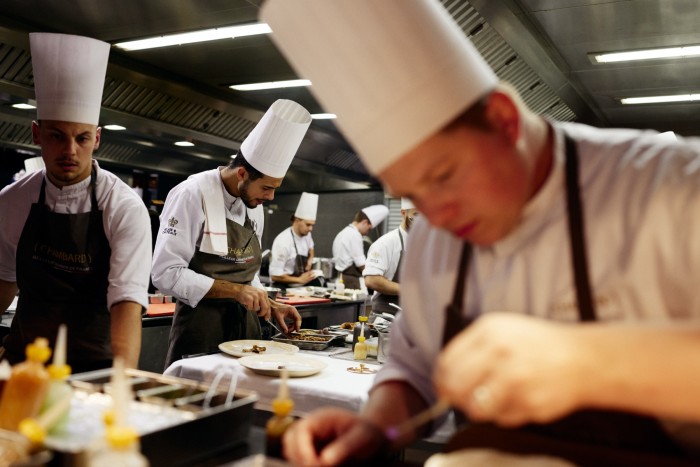
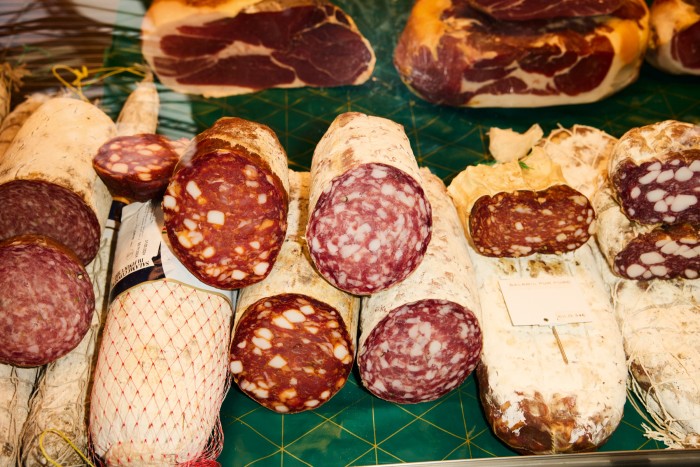
For those concerned with such matters, all the choucroute is served with a small bowl of mustard (slightly milder than, say, Maille Dijon). “We say in Alsace there is no choucroute without mustard,” says the waiter. It’s safe to say there’s no Alsace without choucroute.
At Le Chambard, there’s no wasted meal. Any idea that you’re going to skip breakfast vanishes when you see the gorgeous croissants. Then there’s Gugelhupf, a circular cake that is another local speciality, leavened with yeast and dusted with powdered sugar, sitting and waiting on the table. I secretly hope this will be dreadfully heavy so I won’t be tempted: I’m sorry to report that it’s lighter than it looks.
Cocktail hour is no respite. Le Chambard’s bar serves local gin (if you’ve had too much Riesling), and then they bring out thin slices of smoked sausage and a pâté en croûte. If you’re still in the game after that, there’s dinner at the Michelin-starred restaurant.
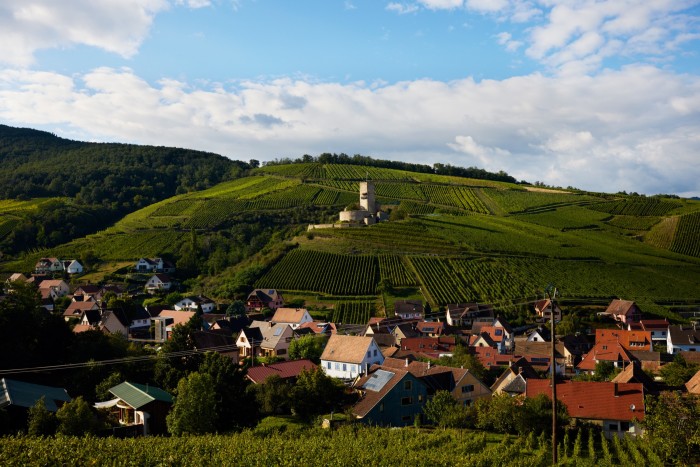
You don’t have to leave the compound to eat brilliantly, but there’s so much else to see. Up the hill from Kaysersberg is Katzenthal, home of the Meyer-Fonné vineyard. Rows of carefully tended vines climb the slopes. From the road you can look down to the Rhine and into Germany and see the outline of the Black Forest. The vineyard is overseen by the tall, charismatic Félix Meyer, whose family has been making wine in their area since 1732. They practise organic viticulture here and benefit from being sheltered by the Vosges, which serves to create a protective microclimate. The resulting grand cru Riesling is not that overly sweet white that frightens some people. Rather, the Meyer-Fonné Riesling is clean, mineral and wonderfully balanced.

Our tasting begins with small pours of three bottles, which feels correct. Félix describes the terroir of each and offers unpretentious tasting notes. He spits his tastes regularly into what the French call a crachoir. But I’m drinking Riesling in Alsace and am not wasting anything; I ignore my crachoir. Then Félix gets up and retrieves three more bottles. I hadn’t counted on that. By the last of six glasses, my handwriting is less lucid but, as is often the case, my appreciation of the wine is undiminished.
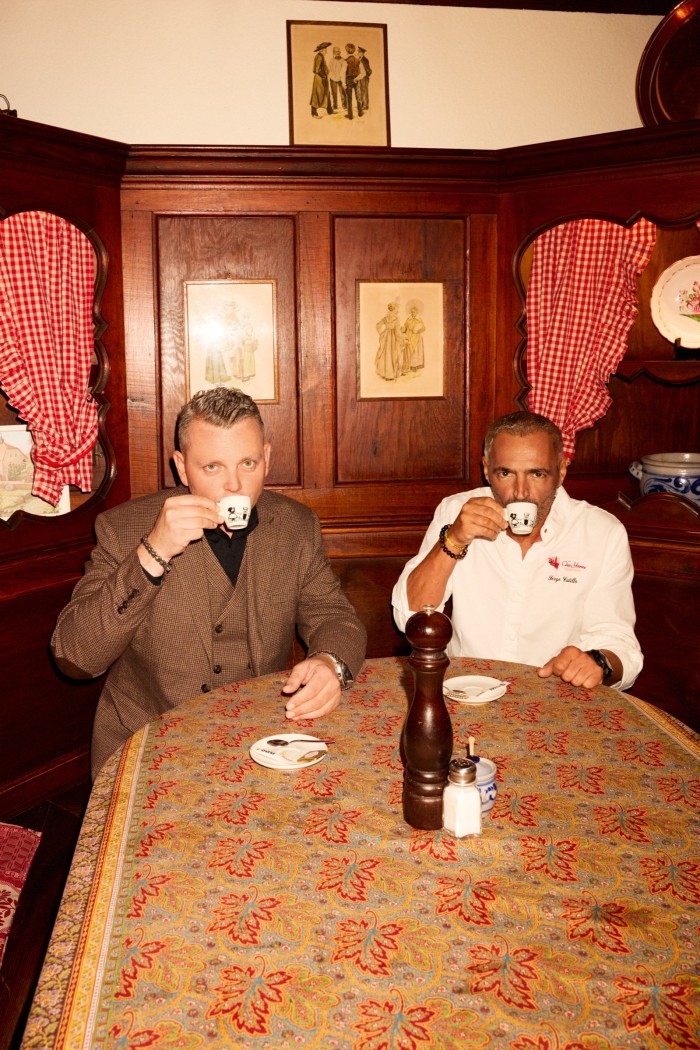
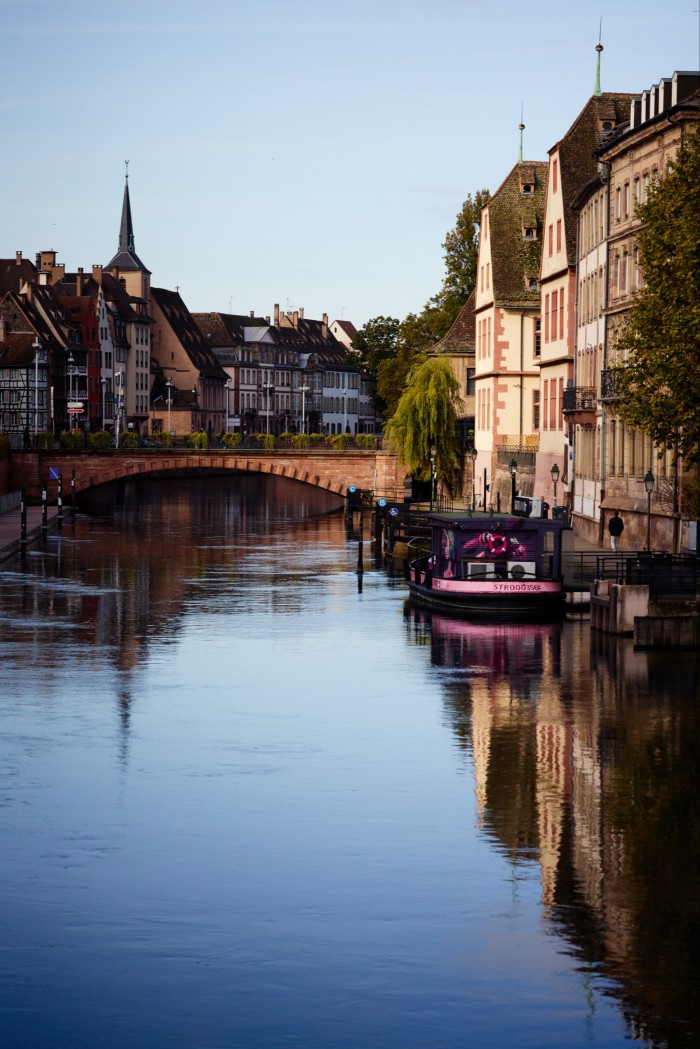
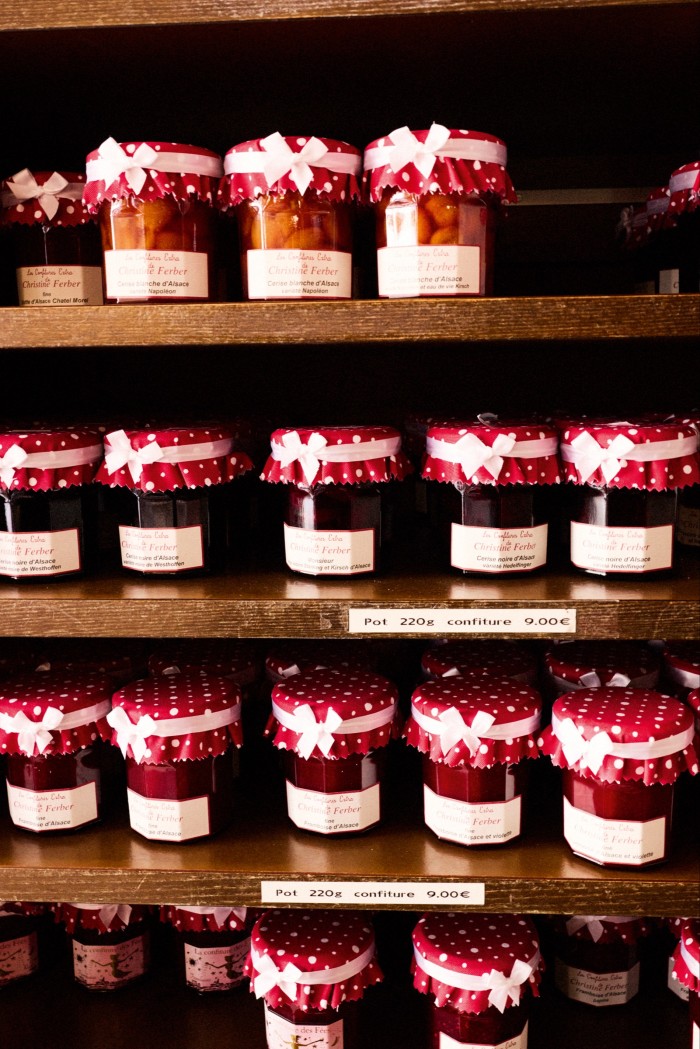
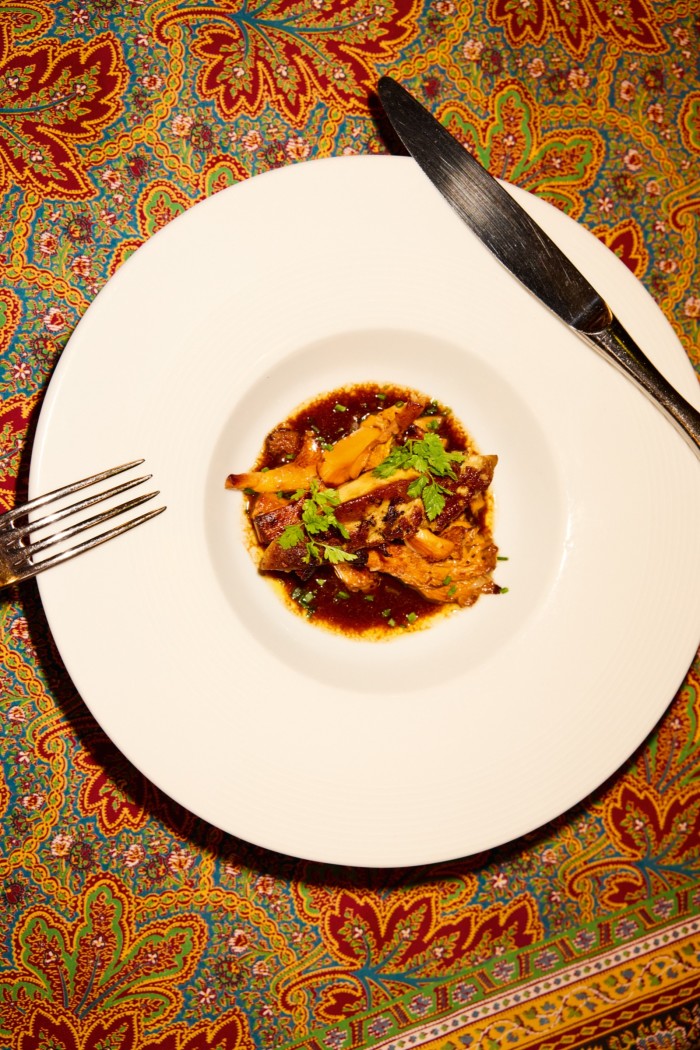
Across the valley from Katzenthal is Niedermorschwihr, quiet and perfectly maintained. The streets are still in the afternoon, but there’s action at Maison Ferber, where you find the celebrated jam of Christine Ferber. You can try melon, cardamom and rum, or Bergeron apricot with currants. Ferber was made a Chevalier of the Legion of Honour for jam, so it’s not crazy if you conclude this is the best you’ve ever eaten. Her store also sells bread, cookies, lovely prepared food, cakes, honey and a small, well-chosen collection of wine.
An hour north is Strasbourg, the sturdy city along the River Ill. Strasbourg lacks the intimacy of southern Alsace, but makes up for that in activity – there’s a good antique market at the weekend and impressive food stalls. I bought some old linen napkins from one of the dealers, food never being far from my mind.
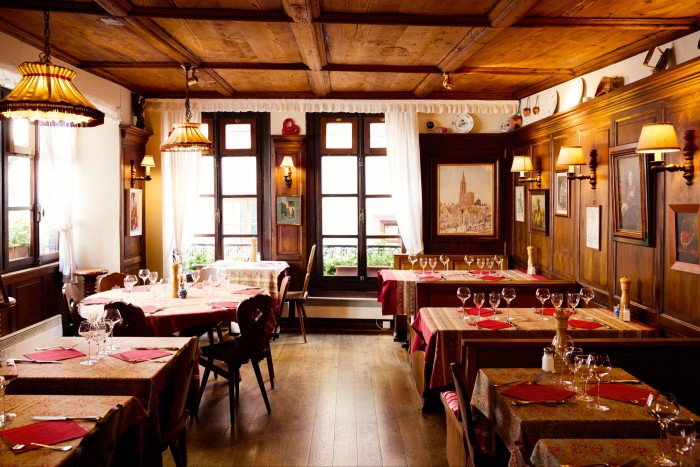
Eating in Strasbourg offers a near-criminal number of choices. But start with Chez Yvonne, a venerable winstub in the old town. This restaurant, a series of handsome rooms on three floors, is in a c1600 building that in 1873 became a tavern. I decide to forgo the choucroute and have the day’s special: a slice of… pork loin. Not exactly the beginning of a cleanse. This is a place where families come for weekend lunch; the warm decor feels like an extension of home, and the staff seem on friendly terms with nearly all the clientele. Chez Yvonne is an institution with a heart, but the heart could use a visit to the cardiologist.
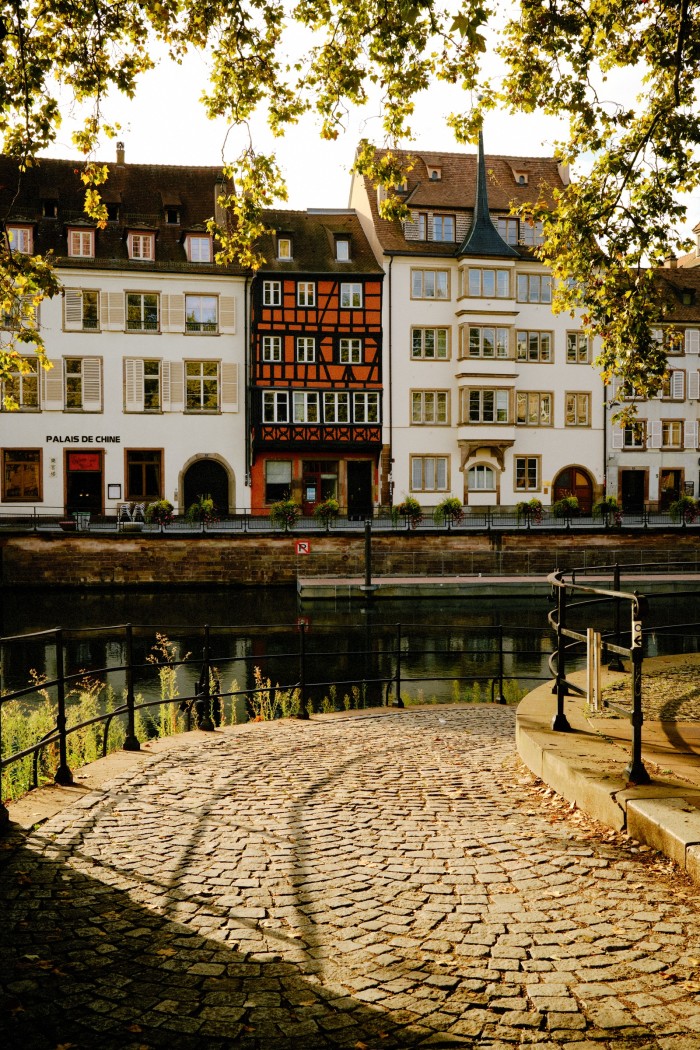
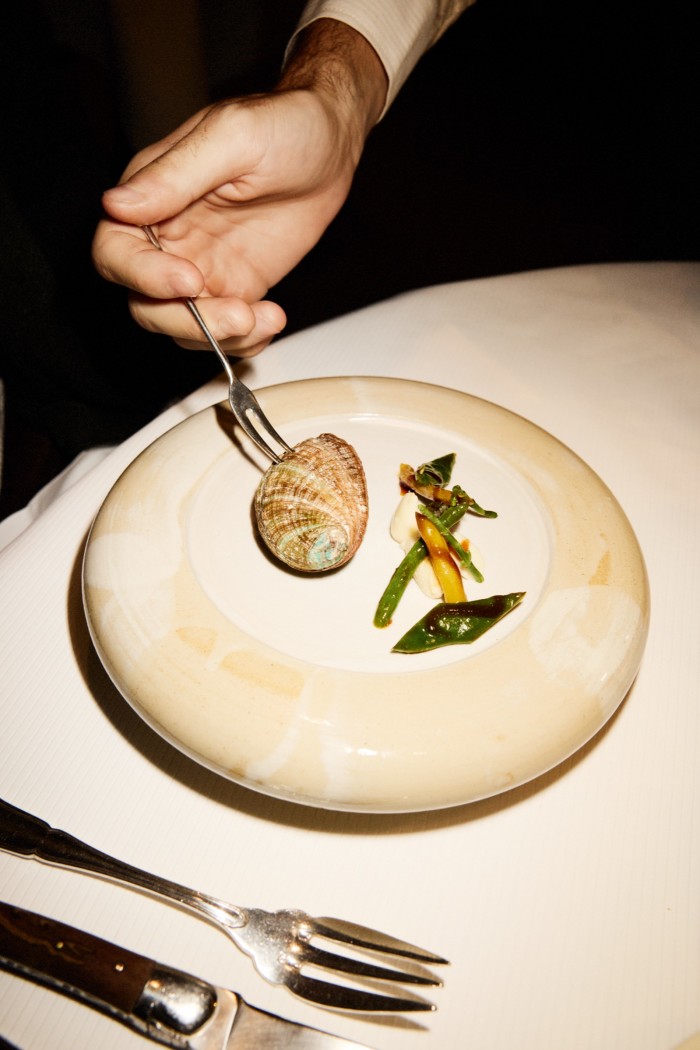
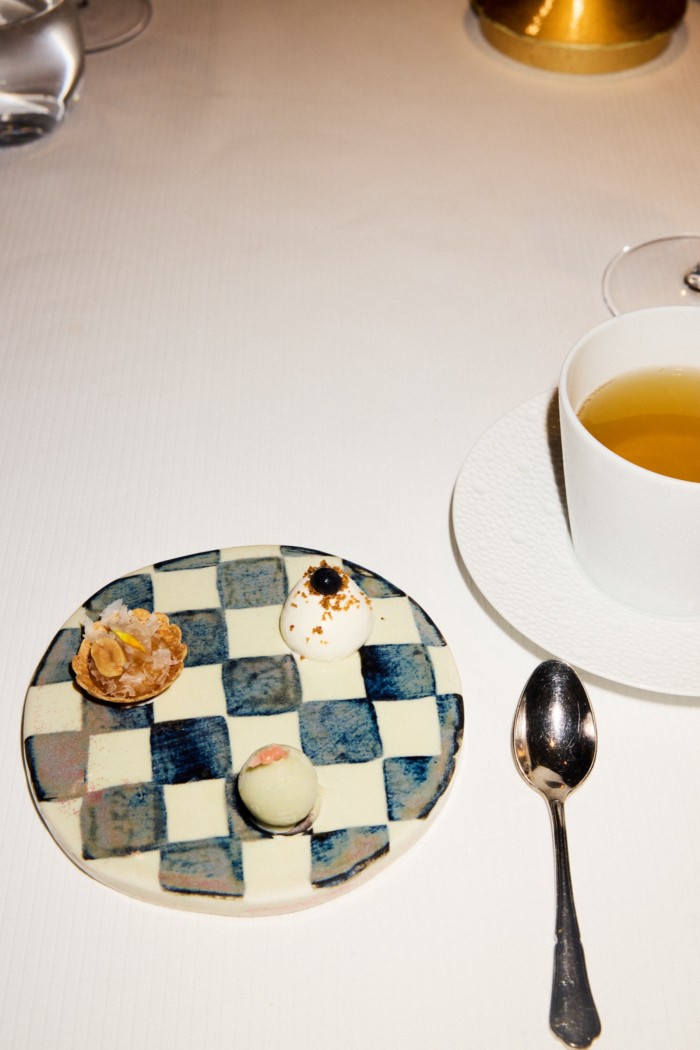
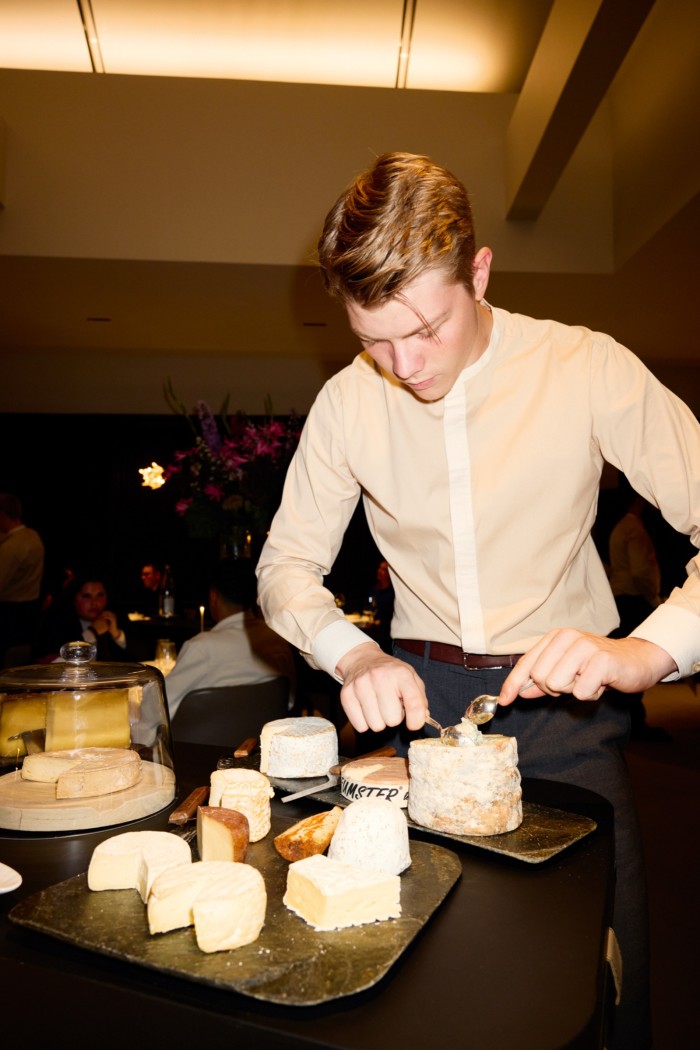
There are off-ramps from the gastronomic highway, if you want to take them, and other options beyond the porcine. Most menus have a local pike quenelles, a light French dumpling (light is a relative term here, since this usually comes in a cream sauce). There are other fish from the nearby rivers. Game is a good choice as the weather gets colder. Autumn is mushroom season, with various varieties making their way onto the menu. There is even a line out the door at a gluten-free bakery.
But I have other ideas. Au Crocodile is a Michelin-starred restaurant in a serene room overlooked by a large painting of a 19th-century French square. This is no winstub; it’s modern, precise cooking from Philippe Bohrer. Langoustine tartare comes with summer truffle and a hint of soy sauce – a revelation. A small chop of summer venison, something I didn’t know exists, is leaner than its autumnal sibling. It would be rude to ignore the impressive cheese trolley (three-year-old Comté, anyone?). Then a glass of Bas-Armagnac, and everything feels very civilised.
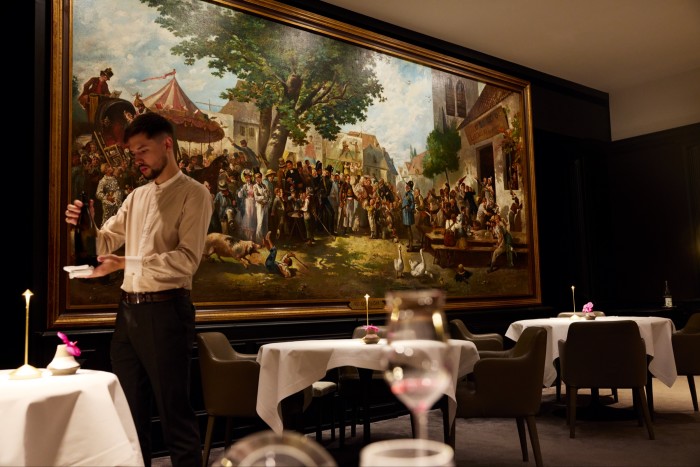
After a number of days, heroic eating runs its course. I can’t keep up with the ghosts of heroes like AJ Liebling and RW Apple. Toward the end of my trip, I skip a meal or two. By which I mean I go to a café for a tarte flambée – the thin flatbread, almost a pizza, with light white cheese (sometimes mixed with crème fraîche, so not that light) and sliced lardons (OK, not light at all). But sitting on a side street in Kaysersberg with a tarte and glass of house Riesling, looking up at the green vineyards, quiet in the sun; it feels like perfection.
David Coggins stayed and dined as a guest of La Maison des Têtes (from €270) and Le Chambard (from €260), and dined as a guest of Chez Yvonne and Au Crocodile